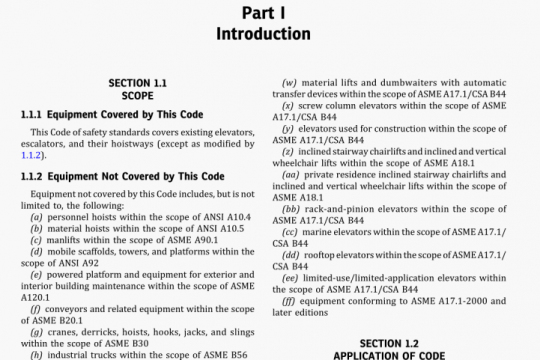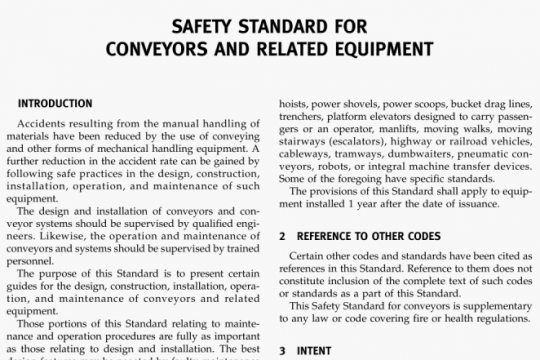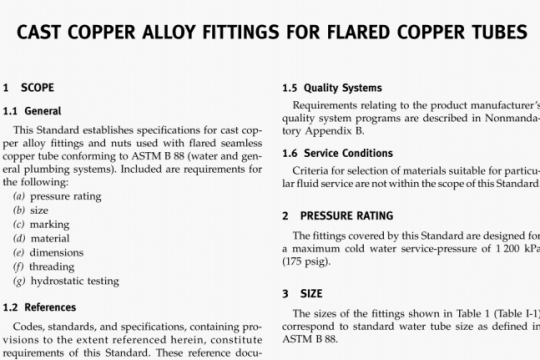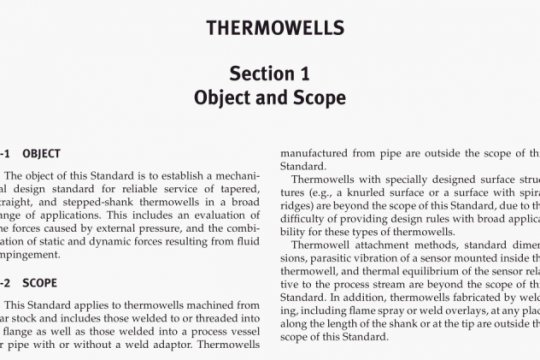ASME B16.5-2020 pdf free
ASME B16.5-2020 pdf free.Pipe Flanges and Flanged Fittings NPS 1/2 Through NPS 24 Metric/Inch Standard.
Pressure- temperature ratings are maximum allowable working gage pressures in bar units at the temperatures in degrees Celsius shown in Tables 2-1.1 through 2-3.19 for the applicable material and class designation. Tables 2-1.1C through 2-3.19C list pressure- temperature ratings using psi units for pressure at the temperature in degrees Fahrenheit. For intermediate temperatures,linear interpolation is permitted. Interpolation between class designations Is not permitted.
2.2 FLanged Joints
A flanged joint is composed 01 separate and independent, although interrelated, components: the flanges. gasket, and bolting, which are assembled by another influence, the assembler. Proper controls must be exercised in the selection and application for all these elements to attain a joint that has acceptable leak tightness. Special techniques, such as controlled bolt tightening, are described in ASME PCC-1.
2.3 Ratings of FLanged Joints
2.3.1 Basis. Pressure—temperature ratings apply to hanged joints that conform to the limitations on bolting In para. 5.3 and on gaskets In para. 5.4, which are made up in accordance with good practice for alignment and assembly (see para. 2.2). Use of these ratings for flanged joints not conforming to these limitations is the responsibility of the user.
2.3.2 Mixed FLanged Joints. If the two flanges in a flanged joint do not have the same pressure-temperature rating, the rating of the joint at any temperature is the lower of the two flange ratings at that temperature.
2.4 Rating Temperature
The temperature shown for a corresponding pressure rating Is the temperature of the pressure—containing shell of the component. In general, this temperature is the same as that of the contained fluid. Use of a pressure rating corresponding to a temperature other than that of the contained fluid is the responsibility of the user, subject to the requirements of applicable codes and regulations. For any temperature below – 29°C (- 20°F), the rating shall be no greater than the rating shown for —29°C (—20°F) (see also paras. 2.5.3 and 5.1.2).
2.5 Temperature Considerations
2.5.1 GeneraL. Useof flanged joints at either high or low temperatures shall take into consideration the risk of joint leakage due to forces and moments developed in the connected piping or equipment. Provisions in paras.2.5.2 and 2.5.3 are included as advisory with the aim of lessening these risks.
2.5.2 High Temperature. Application at temperatures in the creep range will result in decreasing bolt loads as relaxation of flanges, bolts, and gaskets takes place.Flanged joints subjected to thermal gradients may likewise be subject to decreasing bolt loads. Decreased bolt loads diminish the capacity of the flanged joint to sustain loads effectively without leakage. At temperatures above 200^C (400°F]) for Class 150 and above 400’C (750*F) for other class designations, flanged joints may develop leakage problems unless care is taken to avoid
imposing severe external loads, severe thermal gradients, or both.ASME B16.5 pdf download.




